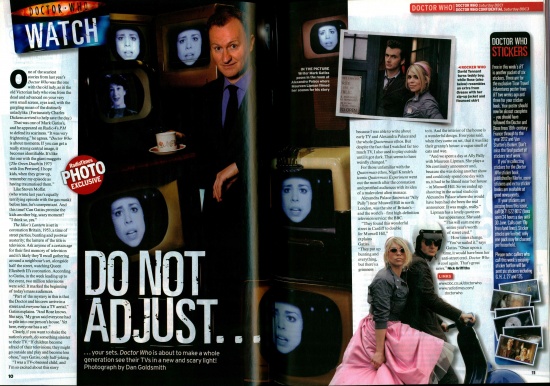Do not adjust...
From The Doctor Who Cuttings Archive
Revision as of 02:34, 27 December 2013 by John Lavalie (talk | contribs) (Created page with "{{RT S2}}{{article | publication = Radio Times | file = 2006-05-27 Radio Times.jpg | px = 550 | height = | width = | date = 2006-05-27 | author = Nick Griffiths | pages = 10 ...")

coverage of series 2, 2006
- It's not long now ... (1 April)
- It's nearly time ... (8 April)
- All aboard the TARDIS (15 April)
- Bad wolf? | Royal prey (22 April)
- Friends reunited (29 April)
- Tick tock! | Letters (6 May)
- Heavy metal (13 May)
- The Mick of Time | Letters (20 May)
- Do not adjust... | Letters (27 May)
- Ood ... you are awful (3 June)
- Talk of the devil | Letters (10 June)
- Careful what you wish for ... (17 June)
- Unearthly child (24 June)
- Time to move on | Letters (1 July)
- On the set with ... David Tennant (8 July) |
Letters (July 22) - The Claus of doom (23 December) | Letters (14 January)
S1 | S2 | S3 | S4 | Specials | S5 | S6 | S7 | S8 | S9 | S10
